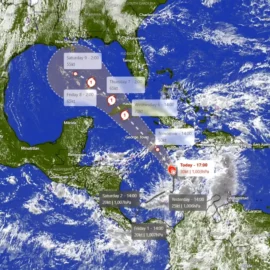
Chronic Wasting Disease: A Growing Threat to Wildlife and Potential Risks to Humans
Chronic Wasting Disease (CWD), often referred to as "zombie deer disease," is a fatal neurological disorder affecting deer, elk, and moose. Caused by abnormal prions, the disease has been spreading rapidly across North America and beyond. While primarily affecting wildlife, concerns about its potential transmission to humans have sparked significant research and public interest.
Latest Developments
Recent studies have deepened our understanding of CWD and its potential implications for human health. Some key findings include:
Increased Geographic Range: CWD has expanded its geographic range, with new cases reported in previously unaffected areas.
Transmission Pathways: Researchers are making significant strides in understanding the various ways CWD can be transmitted, including through direct contact, contaminated environments, and potentially even through consumption of contaminated meat.
Human Health Risks: While there have been no confirmed cases of CWD transmission to humans, ongoing research continues to explore the potential risks. The long incubation period of prion diseases makes it challenging to definitively rule out human transmission.
Potential Risks to Humans
The primary concern regarding CWD is the potential for it to be transmitted to humans, similar to other prion diseases such as Creutzfeldt-Jakob disease (CJD). While the risk is still considered low, several factors contribute to this ongoing concern:
Prion Resistance: Prions are notoriously resistant to heat, chemicals, and radiation, making them difficult to inactivate.
Long Incubation Period: The incubation period for prion diseases can be decades, making it challenging to detect and study.
Species Barrier: While the species barrier between animals and humans is generally strong, there is always a possibility of cross-species transmission, especially with increasing human-wildlife interactions.
Public Health Measures
To mitigate the risks associated with CWD, public health authorities and wildlife management agencies are implementing a variety of measures, including:
Surveillance: Ongoing surveillance of wildlife populations to monitor the spread of the disease.
Hunting Regulations: Implementing hunting regulations to reduce the spread of CWD through the movement of infected animals.
Testing: Developing and improving testing methods to detect CWD in live animals and carcasses.
Public Education: Raising awareness about CWD and the importance of following guidelines to reduce the risk of exposure.
Conclusion
Chronic Wasting Disease poses a significant threat to wildlife populations and has the potential to impact human health. While the risk of human transmission is currently considered low, continued research and vigilance are essential to fully understand the implications of this emerging disease. By working together, scientists, wildlife managers, and public health officials can take steps to mitigate the risks associated with CWD and protect both human and animal health.
Chief forecaster and ideologist of the weather forecast service Pogodnik. Co-author of scientific articles and specialized content for various online media.




